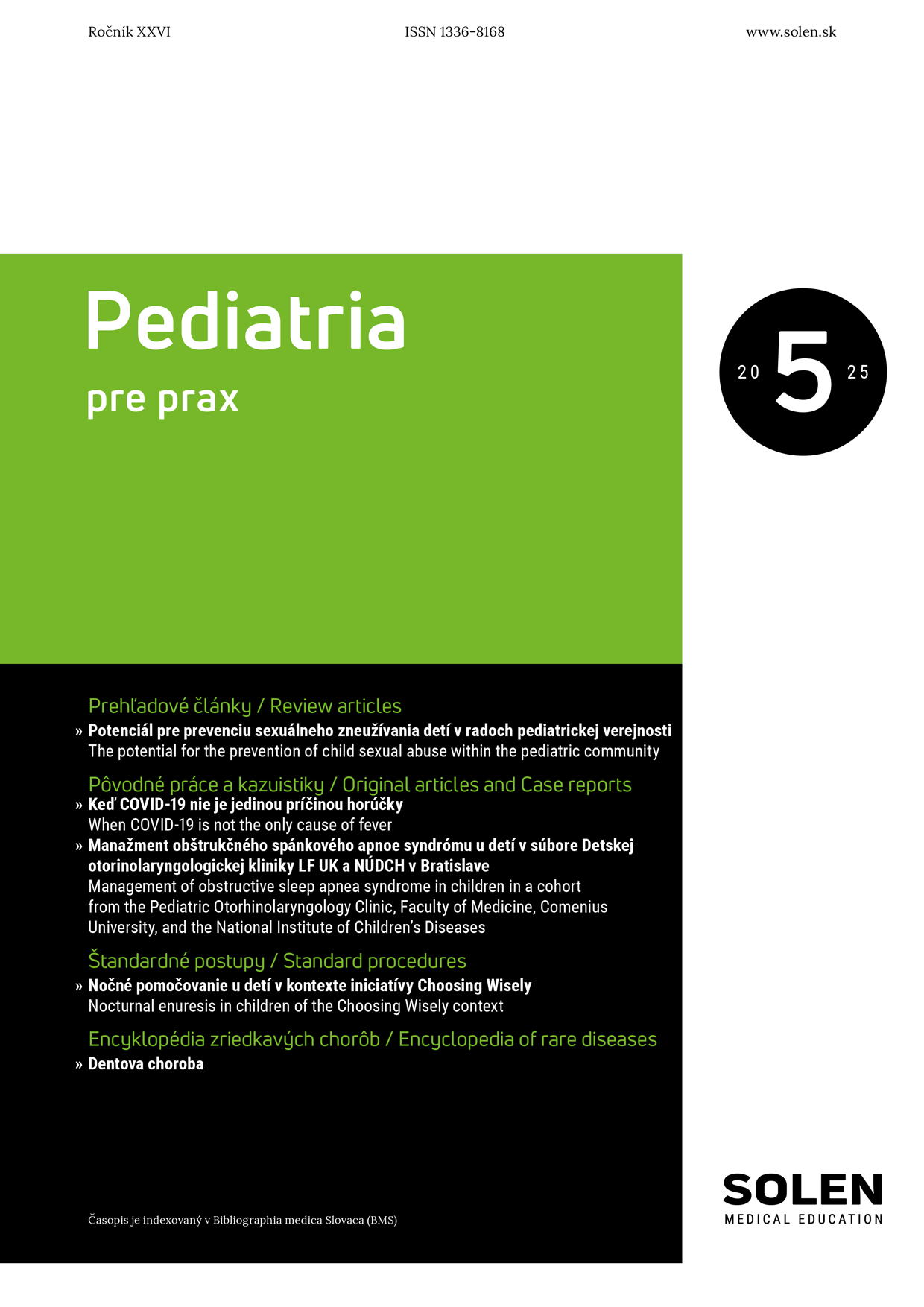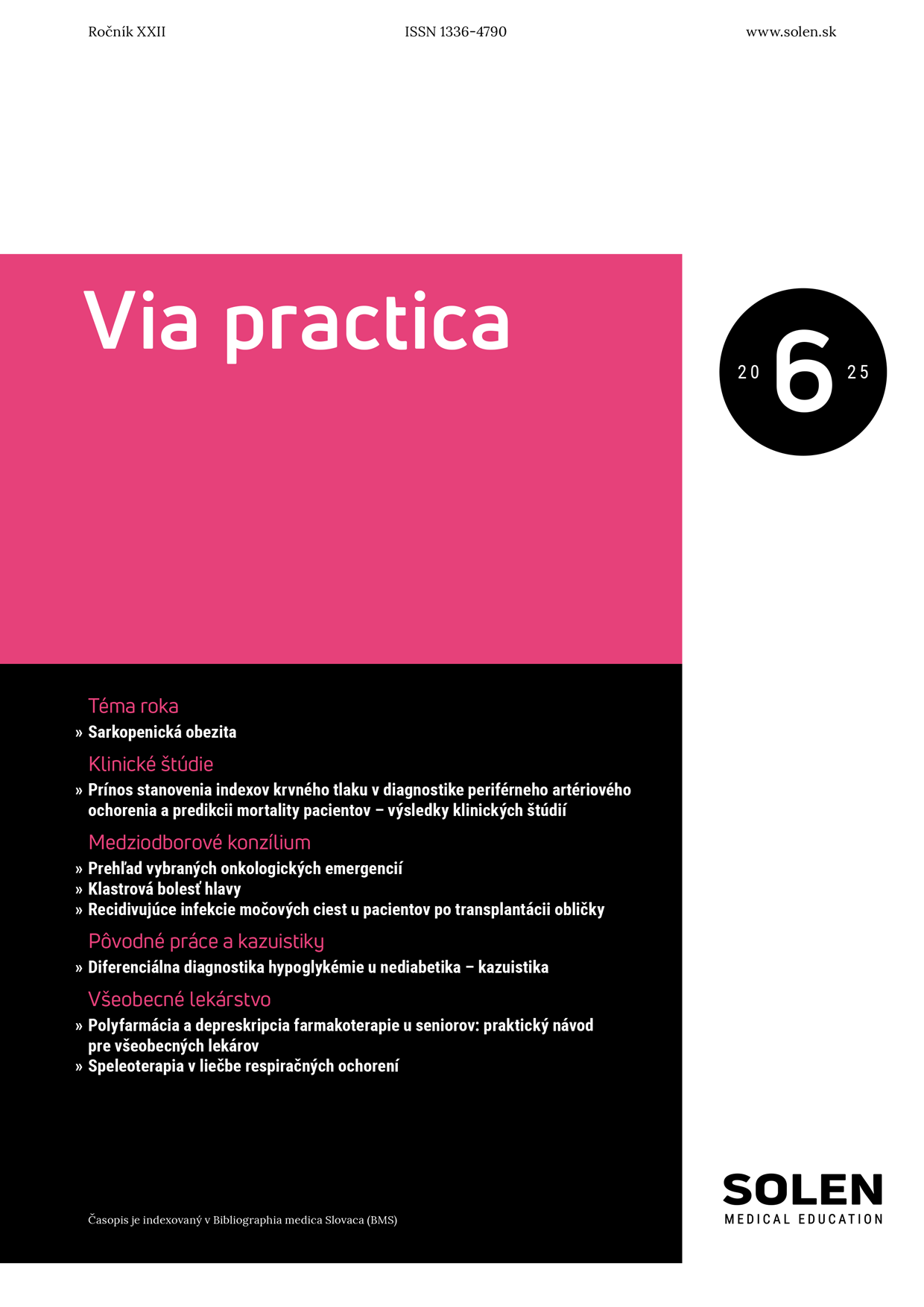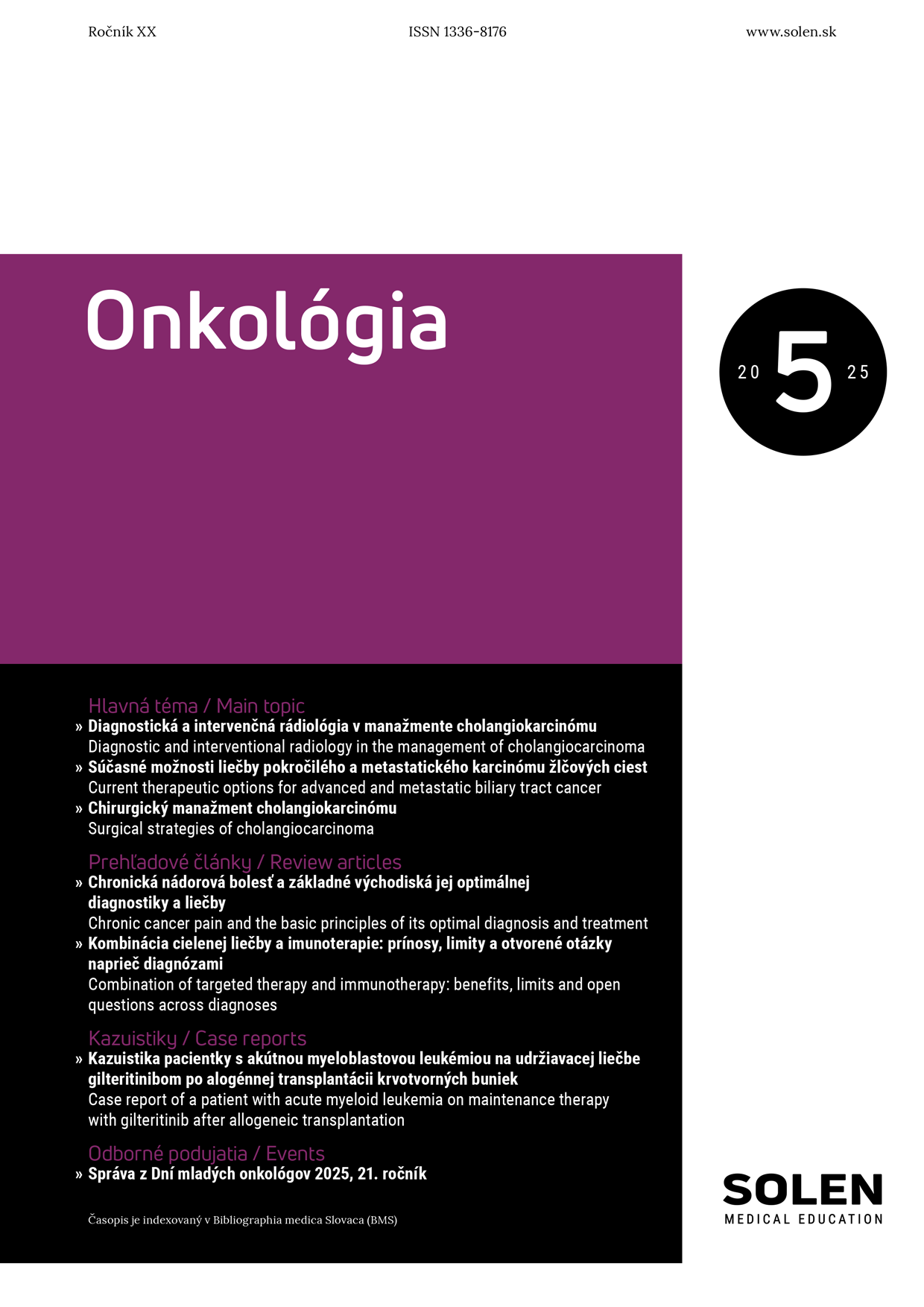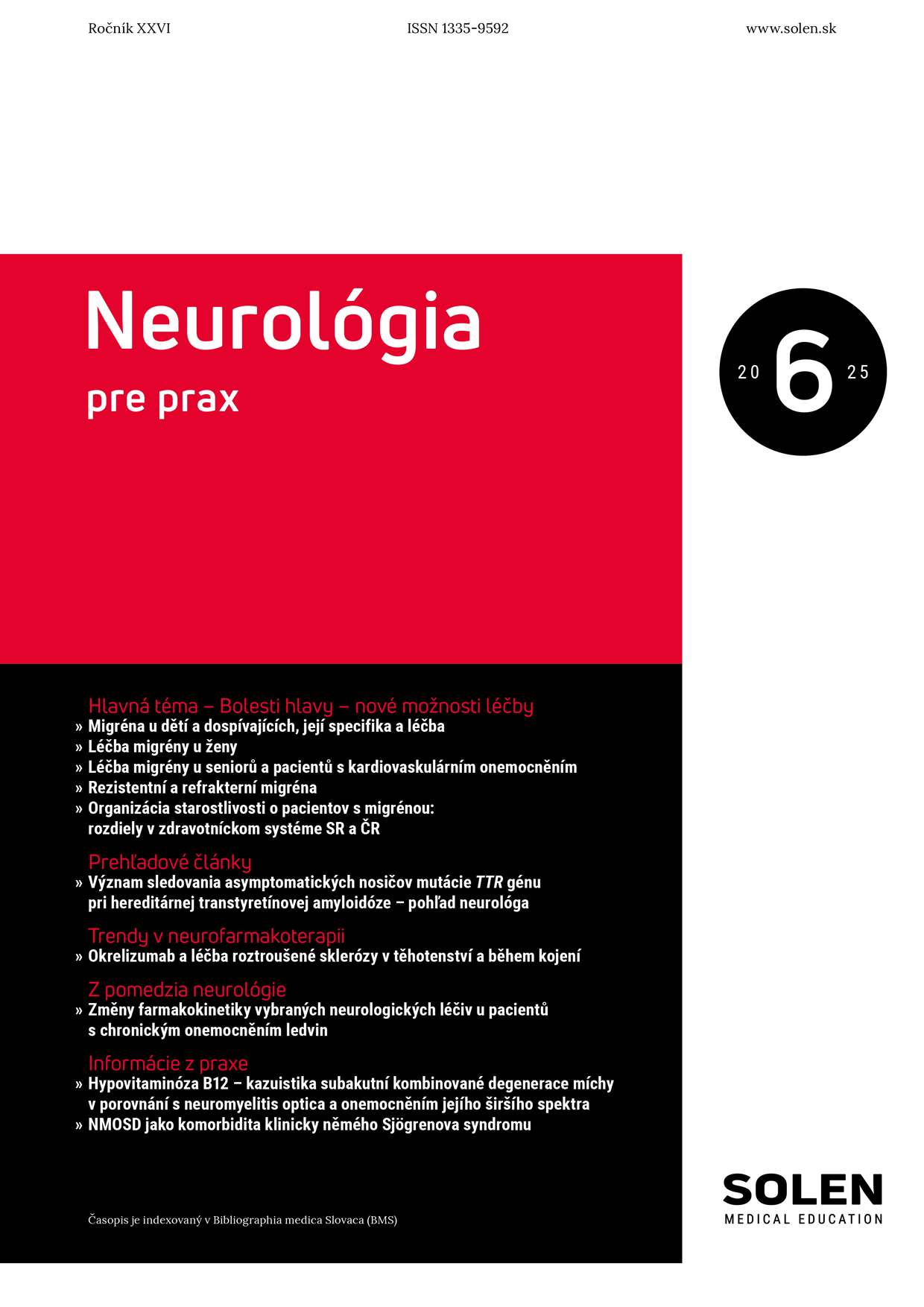Slovenská chirurgia 4/2020
Intermediate and High Risk differentiated thyroid carcinoma - surgical diagnostic and therapeutic pitfalls
Introduction: Intermediate and High Risk differentiated thyroid carcinoma (TC) represents 33% of all thyroid cancers. Early detection, recognition from low-risk cancer, is crucial for further management and prognosis of the patient, especially with regard to disease recurrence. Patients and methods: At the Department of Oncological Surgery St. Elisabeth Cancer Institute in Bratislava from 1.1.2016 to 31.12.2018 we performed 551 operations for TC, 276 primary operations (70 men, 206 women, median age 52 years) for differentiated TC, 131 (47%)
- we classified the tumor as risky. The intermediate and high-risk tumor had to have at least one of the following criteria:> 5 metastases in the lymph nodes (LU) of the central neck compartment (CK), metastases in the LU of the lateral neck compartment (LK), tumor size greater than 4 cm, or the presence of extrathyroid extension (ETE). In the subsequent course of the disease (2-4 years), we evaluated the persistence of the disease, the emergence of new metastases in the LU or distant organs and the development of radioiodine (RJR) refractory. We compared the group of patients with the group of 145 patients with low-risk cancer and statistically evaluated it. Results: In the group of intermediate and high-risk tumors in the observed period from 1.1.2016 to 31.12.2019, the disease persisted after the end of RJ treatment in 24.4% of patients (OR 8.85, p = 0.0001), we diagnosed metastases in cervical LU in 17.5% of patients (OR 3.64, p = 0.004), distant (lung) metastases 4.58% patients (OR 6.64, p = 0.08), 16% patients had RJR tumor (OR 47.6, p = 0.0071). In the group of low-risk carcinoma (145 patients), the persistence of the disease after the end of radioiodine treatment was 2.75% of patients, 4.8% of patients had metastases in LU, 0.69% patients had metastases in lungs, RJR tumor was not detected in this group of patients. Conclusion: Despite the generally excellent prognosis of differentiated carcinoma of the thyroid gland, there is a group of patients with intermediate and high-risk cancer that is more difficult to manage and has a worse prognosis, either in terms of development local disease recurrence or nodular and distant metastases. Proper preoperative diagnosis and the resulting surgery significantly affect the patient‘s morbidity and quality of life (lower number of reoperations, lower number of hospitalizations at KNM unit and lower total radioiodine dose), but also prognosis (in terms of reduced recurrence rate). Centralization of these patients is the way of choice.
Keywords: thyroid cancer at risk, surgical treatment, central neck dissection

















